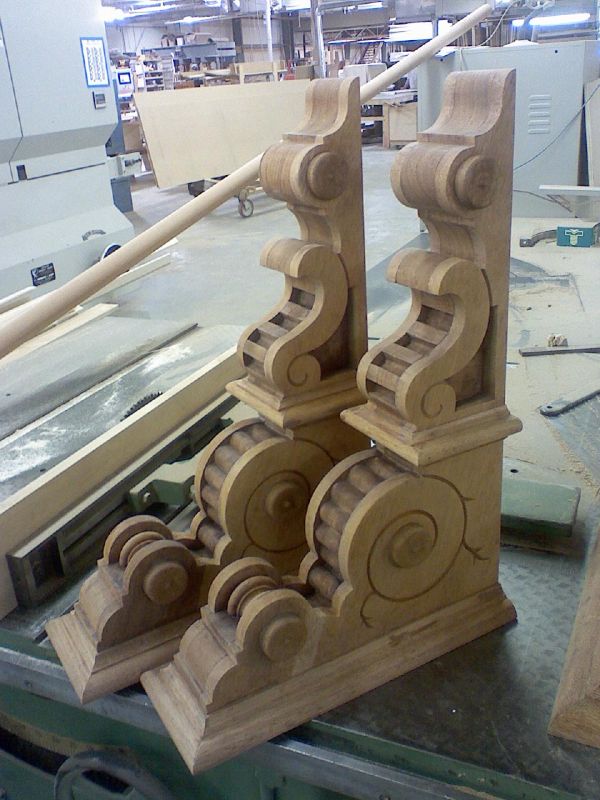Steam Bending Alder
Pondering whether to steam-bend alder for a curved shutter frame, a woodworker hears that other woods, or other methods, may meet his needs better. April 21, 2011
Question
I need to bend eight pieces of alder for a frame unit that will surround shutter panels going into eight eyebrow windows. I need about 3" of rise on each piece that will be 36" in length. I have a six week time window in which to accomplish this. I was thinking of steaming the alder, but due to the thickest part being 1 1/8", I was wondering about the probability of success.
I have never steamed wood. If it will work, what time frame would be required to re-dry the wood for finishing? The alder will be stained, and finished with lacquer sealer and top coat. I usually just rip my wood and re-glue while clamped to my bending jig, then reshape and sand to get my profile, then go ahead immediately with finishing. Is the steaming method even practical for this application and time frame?
Forum Responses
(Architectural Woodworking Forum)
From contributor R:
I have steam bent alder but without much luck. Alder dries out very fast when you remove it from the steam box so try and bend it as soon as you can. You might be able to steam these since there isn't much of a radius. If I was doing this I would just cut these from solid boards and profile them afterwards.
From contributor M:
Solid wood, profile after the fact. As far as steam bending alder, we have always substituted cherry. It has similar grain and color but steams much better.
From the original questioner:
Thanks for the feedback, I believe I will glue up some material and then go from there. The profile is only a slight bead on the face, and I can do the cutout area with no problem. I run into situations pretty often where I need curved frames, ordering it from elsewhere is pretty expensive so I have been looking for an opportunity to learn a little more and try my hand at steaming. From what I have been reading, the other woods we use would probably be better to work with.
Just for the record, what is the wait period to let steamed wood dry before finishing? When using kiln dried lumber does it mean you are back to square one and have to re-dry to the same degree, or does the steam not have that kind of effect on the wood?
From contributor M:
Iíve been doing this way too long and in all that time I may have used steam for bending perhaps a half dozen times. All jambs, mouldings, and etc are either solid wood joined together or are laid up of thin laminations. That piece you show in the drawing can't simply be steamed then bent.
From the original questioner:
Thanks for the added input, another of my reasons for considering steaming is that I like to consider alternatives to my usual procedures, to be sure I am not ignoring or missing out on a process that could improve what we do. When working with shutters, many windows we are ask to cover are arch tops or eyebrow designs. When possible we do not use a frame, we only make the shutter panel to meet the curvature. But often a frame is a must. The challenge is to get the frame and the shutter panel to curve the same as the window, with a 1/16 clearance between the two. Any springback from steaming the frame would not be acceptable, which is why I now know we are using the best method.
From contributor Z:
Alder is not easy but can be done. Itís best to use cherry, ash, oaks, elm, or beech. Don't start with KD. If it is KD, it is too late to bend. Ideally, it should be partially air dried, to about 20% MC, though a range of 15% to 25% is ok. You cannot put the right kind of moisture back in by steaming. Steaming adds extracellular water. Wood that is partially air dried contains mostly intracellular water. Results will also be poor if a backing strap isn't used. Steamed wood can't stretch, which is what you are asking it to do when you bend it. You need a backing strap to force compression to the inside of the curve, while maintaining the length along the outside of the curve. Drying time is an issue. You want it about 7% for indoor use. You need to add heat to dry it relatively quickly, and a moisture meter to monitor the results. Try all this when you don't have a paying job on the line. It's worth doing.
From Gene Wengert, forum technical advisor:
Some species bend easier than others. Alder is not the best, but is ok. The key, as just mentioned, is the MC - for severe bends, never under 25% MC but not over 30% MC. For shallow bends, as you want, then no lower than15% MC. After bending, hold the piece in the shape you want and dry it. There will be a small amount of springbuck that you must plan for. Avoid drying it further after you take it out of the clamps.
